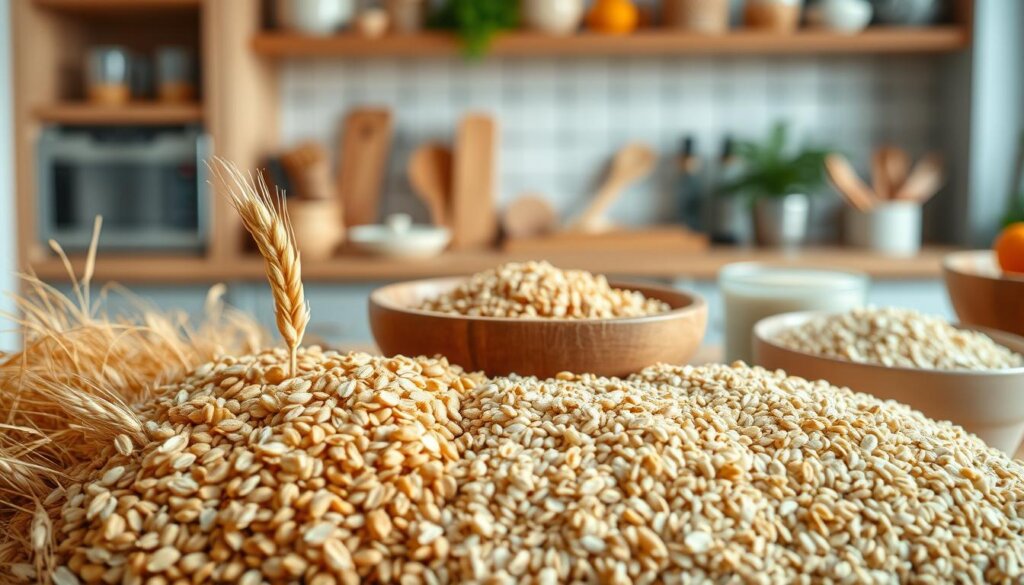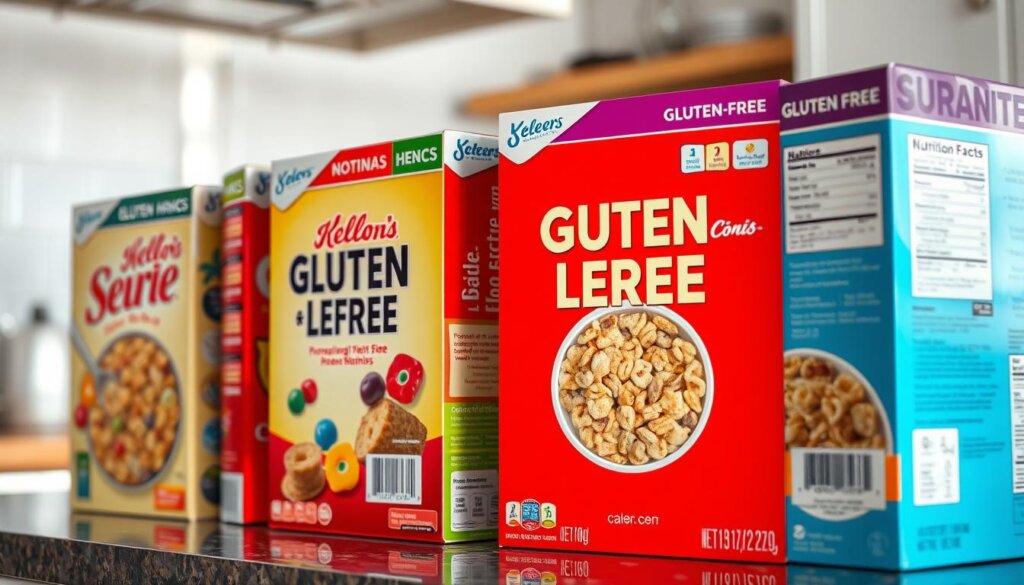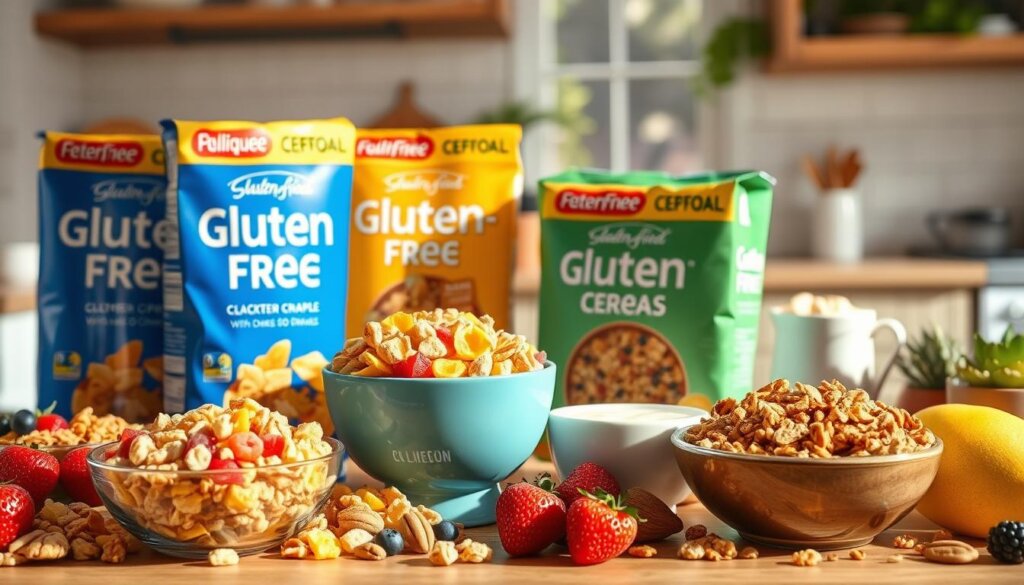Reese’s Puffs bring the perfect mix of chocolate and peanut butter to breakfast, making it a favorite for cereal lovers. But if you have celiac disease, gluten sensitivity, or are simply looking for gluten-free options, you might wonder: can you safely enjoy this beloved cereal without risking your health?
In this article, we’ll uncover whether Reese’s Puffs are truly gluten-free. You’ll also learn about the effects of gluten on health, particularly for those with celiac disease or gluten intolerance. Additionally, we’ll explore the safety of cereals for gluten-sensitive individuals and suggest delicious gluten-free alternatives to satisfy your cravings.
For more on gluten-free breakfast ideas, check out our guide to Gluten-Free Oatmeal Pancakes, explore Easy Gluten-Free Muffins, or try our Delicious Gluten-Free Breakfast Casserole.
Table of contents
Understanding Gluten and Celiac Disease
Learning about gluten and celiac disease is key for those with dietary limits or gluten sensitivity. Knowing the basics helps you make better choices and boosts your health.
What is Gluten?
Gluten is a protein found in wheat, barley, and rye. It makes food chewy and elastic. But for some, gluten can cause big health problems, like those with celiac disease.
The Impact of Gluten on Celiac Patients
For those with celiac disease, gluten starts an immune reaction. This reaction damages the small intestine’s lining. It can lead to nutrient loss, causing anemia, osteoporosis, and brain problems. A strict gluten-free diet is often the only cure.
Symptoms of Gluten Sensitivity
Gluten sensitivity can show in many ways, such as:
- Bloating
- Diarrhea
- Fatigue
- Headaches
Spotting these signs is important for making smart food choices. Even without celiac disease, gluten sensitivity can really impact your life and health.

Are Reese’s Puffs Gluten-Free?
Looking into the gluten in Reese’s Puffs is key for those with dietary limits. Knowing the Reese’s Puffs ingredients helps figure out if this cereal is okay for a gluten-free diet.
Ingredients Breakdown
Reese’s Puffs have corn flour, sugar, cocoa, and artificial flavoring. But, they have wheat, making them bad for those with celiac or gluten issues. Here’s a quick list of some main ingredients:
| Ingredient | Contains Gluten? |
|---|---|
| Corn Flour | No |
| Sugar | No |
| Cocoa | No |
| Wheat Ingredients | Yes |
Cross-Contamination Risks
Even without gluten, it’s important to think about cross-contamination risks. Places might make both gluten and gluten-free foods, which can lead to accidental gluten exposure. This is a big deal for those with serious gluten issues.
What Do the Nutritional Labels Say?
Understanding nutritional labels is hard, even more so for those on a gluten-free diet. It’s key to know what food labels say. This is true, more so when it comes to cereals.
Understanding Food Labels and Claims
Food labels can be confusing. Terms like “wheat-free” might not mean what you think. They don’t always mean there’s no gluten. Always check labels closely, like for cereals.
Many foods with gluten don’t show it clearly. This makes it hard to know what’s safe.
Current Labeling Practices for Gluten
In the U.S., the FDA has rules for gluten-free labels. But not all products follow these rules. Look for certified gluten-free labels to be sure.
This is very important for cereals. They might be made from safe grains but could be processed with gluten. Here’s a look at some cereals:
| Cereal | Gluten-Free Certification | Notes |
|---|---|---|
| Annie’s Cinnabunnies | Yes | Made with gluten-free ingredients |
| Reese’s Puffs | No | Not certified gluten-free, possible cross-contamination |
| General Mills Cheerios | Yes | Batch-tested, less than 20 ppm gluten |
| Kellogg’s Rice Krispies | No | Contains malt flavor, so not gluten-free |

Knowing about gluten-free claims is very important. Use ingredient lists, online info, or gluten testers for better accuracy. This way, you can choose cereals wisely.
Alternatives to Consider
Looking for gluten-free options is key. Many gluten-free cereals are out there. They match different tastes and diets. This helps keep your breakfast balanced and healthy.
Gluten-Free Cereals on the Market
There are many gluten-free cereals that taste great and are safe. Here’s a table of some top picks:
| Cereal Brand | Gluten-Free Status | Main Ingredient | Sugar Content (g) |
|---|---|---|---|
| Rice Chex | Gluten-Free | Rice | 3 |
| Cocoa Pebbles | Gluten-Free | Corn | 10 |
| Lucky Charms | Gluten-Free (risk of cross-contamination) | Oats | 10 |
| Puffins Peanut Butter | Gluten-Free | Oats | 6 |
| Reese’s Puffs | Not Certified Gluten-Free | Corn | 10 |
The table shows safe choices like Rice Chex and Cocoa Pebbles. It’s important to check the gluten-free label. This is true, even for brands that might have gluten.
Homemade Cereal Options
Homemade cereal is a great way to make breakfast your own. It lets you pick the ingredients you like. Here are some easy ideas:
- Oat-based cereal: Mix gluten-free oats with nuts and seeds for crunch.
- Fruity blend: Combine dried fruits with gluten-free grains for sweetness.
- Nutty granola: Make granola with honey, coconut flakes, and nuts for flavor.
By making your own cereal, you control what goes in it. This ensures it fits your diet. It’s a quick and healthy way to start your day.

Consumer Experiences and Reviews
People’s views on products can give us great insights. In the gluten-free world, sharing experiences is key. It helps find safe foods and talk about brands like Reese’s Puffs.
Insights from the Gluten-Free Community
The gluten-free community shares tips and stories. They know that how people react to gluten can vary a lot. This is why getting many opinions is important.
Being part of this community can teach you a lot. It helps those with gluten issues make better choices.
Feedback on Reese’s Puffs
Reviews on Reese’s Puffs show its appeal. Many love the taste, which brings back memories. But, there are warnings about cross-contamination and safety.
Feedback from the gluten-free community is important. It tells us to be careful with Reese’s Puffs. While it tastes great, it’s important to think about its health effects.
Conclusion
Knowing if Reese’s Puffs are gluten-free is key for those with celiac disease or gluten sensitivities. The main ingredients like cornmeal, sugar, and peanut butter are usually gluten-free. But, there’s a risk of gluten getting into the mix during making.
This makes it important to know about these risks. It helps you make diet choices that are right for you.
As more people learn about celiac disease, there’s a big need for gluten-free foods. Even though many love Reese’s Puffs, it’s smart to look for certified gluten-free options. This way, you avoid gluten.
Safe breakfast choices include Rice Chex and Cheerios. They taste great and are gluten-free.
Deciding to eat Reese’s Puffs or not should be thoughtful. Think about your health and what you like. For more on gluten-free diets, check out this link.
Stay up-to-date with gluten-free food options. This way, you can enjoy your favorite foods while keeping your health in mind.
FAQ
Are Reese’s Puffs gluten-free?
Reese’s Puffs are not officially labeled as gluten-free. There’s a risk of gluten cross-contamination during making.
What are the symptoms of gluten sensitivity?
Gluten sensitivity symptoms include bloating, diarrhea, and headaches. These can happen even if you don’t have celiac disease.
What should I look for on the label of cereals to ensure they are gluten-free?
Look for products with a certified gluten-free symbol. Avoid “wheat-free” labels, as they don’t mean the product is gluten-free.
What are some gluten-free alternatives to Reese’s Puffs?
Try Rice Chex, Corn Flakes, or gluten-free oats. They are good alternatives to Reese’s Puffs.
Can I make a gluten-free cereal at home?
Yes, making your own cereal is a great idea. Mix oats, seeds, nuts, and dried fruits for a tasty gluten-free breakfast.
Why is cross-contamination a concern with Reese’s Puffs?
Cross-contamination is a worry because Reese’s Puffs are made in facilities that also handle gluten. This is risky for those with celiac disease or gluten sensitivity.
How can I connect with the gluten-free community for support?
Join online forums, social media groups, and local meetups. They offer great support and advice on living gluten-free.
What do consumer reviews say about Reese’s Puffs?
People love the taste of Reese’s Puffs. But, those with gluten sensitivity should be careful due to possible reactions and cross-contamination risks.





